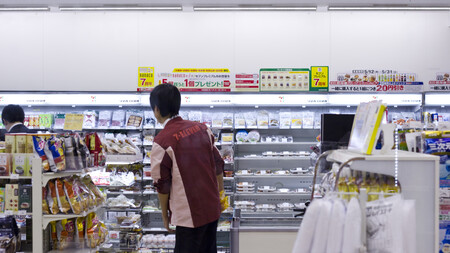Japanese convenience stores, known as konbini, are not simple shops where you Buy fast food or basic products, they are a deep part of the country’s social fabric. Their success is measured not only in numbers (more than 55,000 establishments spread across the 47 prefectures) but in the way they accompany daily life: they allow you to pay bills, send packages, print documents, buy tickets for shows, resolve unforeseen events, take refuge in an emergency or simply take a break in them.
And now that the country does not stop aging, the stores are mortally wounded.
El konbini. Let’s think that, in urban neighborhoods, rural towns or isolated coastal areas, these establishments have become the minimum essential infrastructure where there were previously post offices, banks or small family businesses that have now disappeared.
The store, therefore, is not just a business: it is a safe space, open and available 24 hours a day, a point of emotional and logistical support that has shaped the Japanese daily rhythm and has even captivated millions of tourists, who find in these establishments a mix of efficiency, warmth and aesthetic thoroughness that is difficult to replicate.
Efficiency and expansion. The New York Times recalled in summer that the development of the Japanese konbini has been the result of an evolution of decades. Since 7-Eleven opened its first store in Japan in 1974, the combination of non-stop hours, quality fresh food (onigiri, bentō, noodles, seasonal desserts) and integrated services has made the model a unique phenomenon.
For many residents, these stores are literally the closest store, the most accessible ATM, the place to go when something is missing or something happens. The associated image is one of precision: perfectly organized shelves, impeccable coffee machines, attentive employees, continually renewed food and a sense of total availability.

From Japan to the world. This internal success was projected outwards, so that 7-Eleven, today Japanese owned, is the largest retail chain on the planet, and global expansion plans are aimed mainly at North America. The konbini became an exportable image of Japan: efficient, friendly, reliable.
The hidden reverse. But not everything shined the same. A piece in the Financial Times has revealed that behind this façade of functional perfection lies a franchise system subject to increasingly intense tensions. Japan is aging, the workforce is shrinking, and small businesses are finding it increasingly difficult to recruit staff.
The model requires stores open 24 hours a day, seven days a week, and the pressure not to close falls squarely on the owners. The case of Akiko and her husband, a 7-Eleven manager who worked without a day’s rest for six months until dying by suicide, starkly revealed the human Price of this silent perfection.

And more. It was not an isolated case: a labor inspection recognized the relationship between death and overwork, but the root of the problem is structural. Franchisees must deliver between 40% and 70% of gross profit to the parent company, which reduces their margin and exposes them to absorbing staff, overtime and unforeseen charges. Visible efficiency therefore has an invisible cost.
The crisis of the model. Faced with the problem, the 7-Eleven, FamilyMart and Lawson chains have tried to make hours more flexible, introduce automatic checkouts, AI-assisted ordering systems and cleaning robots to reduce the need for labor. But none of these measures solve the main equation: fewer available workers and more opening hours supported by fewer people.
Domestic consumption is also not growing as before, which limits the owners’ ability to increase payrolls. As minimum wages rise, margins narrow even more. Many managers work dozens of hours for free to keep their stores open. Some confess that, in the current state, closing would be a more rational option than continuing to operate. The fragility of the system thus becomes visible: if there are no new franchisees willing to take over, the model can collapse.
Adaptation or goodbye. The response of the companies points towards a profound transformation of the model. 7-Eleven is studying renewed contracts starting in 2027, possibly moving towards the “mega-franchise” model, where the same owner manages multiple stores and distributes human resources between them.
However, this implies a concentration of the business and could further displace the small independent owners who historically defined the konbini as a community space. The central question is whether the konbini will continue to be a capillary network connected to the territory or whether it will become a centralized corporate system, more profitable but less close.
The great dilemma. If you will, the konbini was born as a symbol of proximity and frictionless service, and became part of the emotional memory of Japan: open places when everything else is closed, spaces where the daily routine has a gentle pause. But that same ideal has been held for decades by people whose efforts have been invisible beneath the surface of efficiency.
Today, the system faces a limit that is not technological, but human. The future of the konbini will depend on whether Japan manages to rebalance the contract between the community, the company and those who keep the doors open at any time, 365 days a year. If it manages to adapt without sacrificing those who support it, it will continue to be an intimate and essential institution. If not, it could become the emblem of a society that knew how to take care of every detail… except for the people who made it possible.
Image | Pexels, Japanexperterna, shankar s.
In WorldOfSoftware | While half the planet aspires to retire, in Japan the opposite is true: 100-year-olds who only want to work
In WorldOfSoftware | The aging population and a poor pension system have a new symbol in Japan: grandmothers are rented
